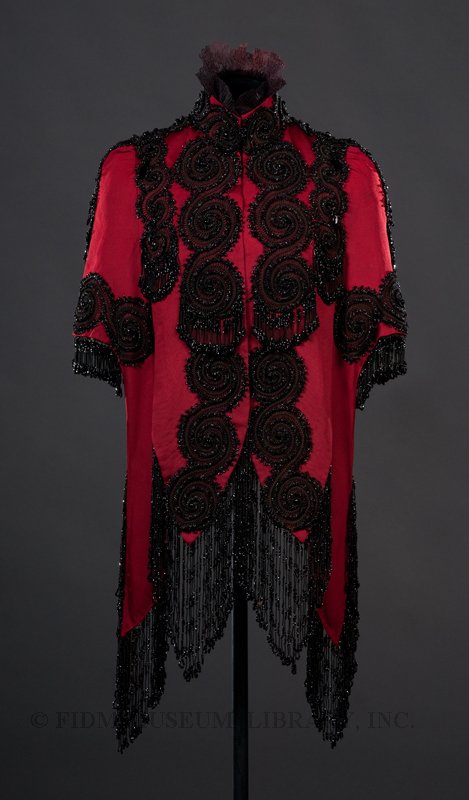We first shared Emile Pingat's striking red and black mantle in 2009. This post features a new image and updated information about this beautiful garment.

Mantle
Emile Pingat
c. 1889
Silk faille, jet & horsehair lace
Museum Purchase, Partial Funds provided by FIDM
2007.905.1
Emile Pingat (active 1860s-1896) created a variety of gowns—promenade, ball, and opera, but was best known as the definitive designer of outerwear, such as dolmans, jackets, and mantles. To be at the height of fashion was to wear a Pingat wrap and a Charles Worth gown. Pingat's fabrics varied from sturdy wool to colored silks, but always featured extensive embellishment: beading, feather-work, appliqué, and lace. He referenced a variety of world cultures and historical eras in his creations. This mantle—with its striking red and black color combination coupled with swirling jet ornaments and lace flourishes—was influenced by traditional Spanish costume. French interest in Spain was known as hispagnolisme. According to Harper's Bazar, Spanish bullfights were a popular attraction at the Exposition Universelle of 1889. The outfits worn by the Spanish toreadors inspired Parisian women to wear gowns of "Spanish red cloth" and outerwear modeled on the bullfighters' short-waisted jackets trimmed with tassels, beading, and fringe.
1 "New York Fashion" Harper's Bazar (December 7, 1889), 883.

